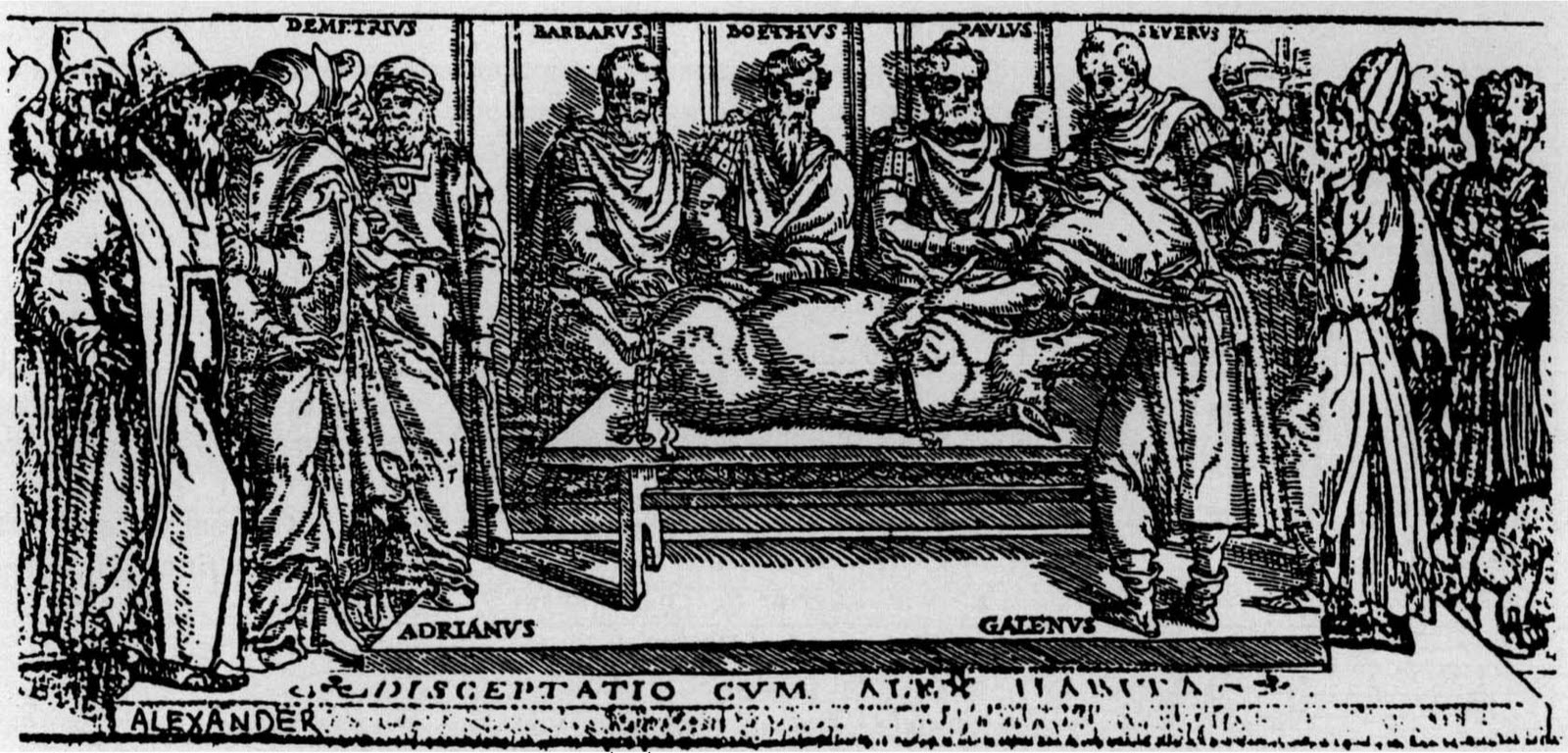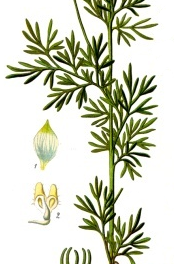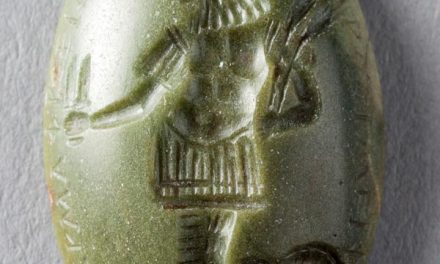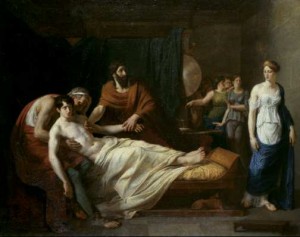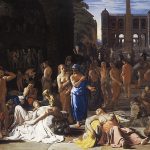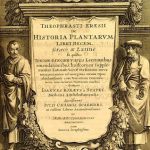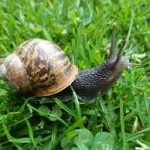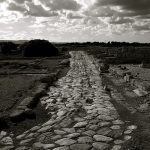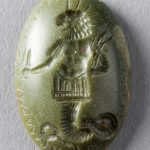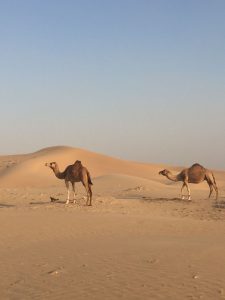 What did a Greek doctor like Galen know about ancient Arabia, and how did this affect his practice? While the debt of Islamic physicians to Galen is often put forward, representations of the East in his works are scarcely investigated. Yet in his lifelong quest for “the real stuff” of drugs in a world where fraud was rife, Galen used a remarkable range of Eastern substances, some fairly rare and used only as medication.
What did a Greek doctor like Galen know about ancient Arabia, and how did this affect his practice? While the debt of Islamic physicians to Galen is often put forward, representations of the East in his works are scarcely investigated. Yet in his lifelong quest for “the real stuff” of drugs in a world where fraud was rife, Galen used a remarkable range of Eastern substances, some fairly rare and used only as medication.
The history of pre-Islamic Arabia and the surrounding countries is best known through ancient Greek and Latin sources. Texts by the likes of Pliny the Elder, Strabo and the anonymous Periplus maris Erythraei (narrating a journey over the Red Sea and beyond) give us a wealth of details about trade routes, exotic products and distant kingdoms from the outer edges of the earth as it was then perceived. Nowadays, archaeological research has supplemented this wealth of ancient accounts with new evidence. It is now clear that the Romans had access to deep-seated resources as far as India and possibly even further, even though the business of bringing them over to the Mediterranean was the privilege of a few well-connected merchants and tribes. Well-travelled people of the time would not go much further than the Syrian coast and the Orontes valley. For the rest, they would rely on others’ accounts and trade.
Hellenistic and Roman military and exploratory campaigns have led to a better connected world, where trade from all parts of the Roman Empire and beyond was made possible through a variety of land and sea routes. Medicine, too, benefited from expanded access to ideas and remedies. From Dioscorides to Galen only, the range of accessible remedies increased dramatically. Writing at the end of the second century AD about pharmacology, Galen is thus an interesting witness of the relationships between Rome and the Eastern regions of the world: his wealth and scientific drive put him in a unique position to investigate exotic pharmacopoeia. A keen observer of the natural world, Galen was also eager to use the best possible drugs known in his time. He thus embarked on a long journey to check out several famous drugs of the Mediterranean (such as the terra sigillata in Lemnos) and beyond, keen to debunk some myths circulating around them whilst stocking up on the most reliable stuff for his own purposes as a medical practitioner. In order to assess each product, he used all his senses (sight, taste, smell, …) in order to test them and also made the locals talk. At each stopover, he would buy the best products in enormous quantities, not for resale but for use over a doctor’s lifetime (Simpl. med. IX, 3 = K. XII, 216). While he was there, he was also able to investigate other interesting features of the relevant areas: Galen thus discusses at some length the properties of the Dead Sea water and salt (Simpl. med. IV, 20 = K. XI, 689-695). The extent of his collections is now better known thanks to the new testimony of his book On avoiding distress. Towards the end of his career, before the Great Fire of 192 AD destroyed much of his property, Galen was in possession of an exceptional stock of rare drugs from all over the world. Some were necessary to prepare sophisticated remedies (such as theriac for the emperors), although one may wonder how often he used his most expensive material.
During that trip, Galen went looking for the best herbs and minerals, such as the best kind of aloe vera (for example) and compared a great variety of different plants and substances – he was perfectly aware that the properties of a drug varied wildly according to place and species. His journey took him to Syria Palestine, a Roman province where many trade routes converged, including Arabian caravans from across the desert. Countless substances from the Levant, Arabia (including Arabia felix, now known as Yemen) and the deeper regions of Asia Minor are recorded in Galen’s pharmacological works; he sometimes provides local, semitic names for them; but he also demonstrates access to Indian materia medica, for which he often has praise, such as cane sugar and a special variety of aloe vera. The hotter the region, he explains in book VI, the better the aloe (K. XI, 821-822): the variety found in Coele Syria (at the time, a large region stretching beyond Palestine) and Arabia is better than “ours” (i.e. the Mediterranean kind), Galen continues, but the best of all is the Indian type, which is imported as juice, for all its remarkable, wide-ranging healing properties (from stomach-easing to healing wounds and inflammations). Galen, however, did not embark on an adventure on the Red Sea looking for all this stuff: he relied on merchants bringing it over, all the way from India across Arabia, on camels’ caravans. Despite not being able to tell the real from the false stuff, because he had never seen it before, Galen bought the Indian aloe vera he was offered at some point on his way back from Palestine: the camels and merchants actually looked like the real people who would bring the stuff from distant Arabian ports across the desert (cf. Simpl. med. IX, 3 = K. XII, 216). As for cane sugar (sackhar), Galen, following Dioscorides, classifies it as a kind of honey (meli) growing on reeds (kalamoi), which he finds less sweet than “our” honey, but having similar medicinal properties. Both Dioscorides and Galen say it comes from Arabia felix and India: this points out to early cultivation of sugar canes in Southern Arabia – unless they are mistaken, in so far as Arabia felix could have been a simple transitional point on the trade route from India.
Thus, while remaining largely mysterious and unknown to most Roman citizens, even highly educated ones like Galen, Arabia was familiar through a range of medicinal substances brought over by merchants. Beyond the commonly mentioned Arabian staples of myrrh and frankincense (and Galen of course is not unaware of their uses and properties), and more common Syrian plants such as pistachio, a number of precious remedies travelled all the way from the remote parts of Arabia and India. They were part of recipes in the Roman world, they were probably in use in the capital city of Rome where the likes of Galen brought them and used them. In this quest for the best possible remedies, Galen sometimes had to compromise over his preferred methods of quality control: but those remedies would remain in use for centuries in the West, either through Galenic prescriptions or through later Arabic compendia. Somehow, history proved him right, although sugar has become a bit of an issue since it escaped the medicinal domain!
